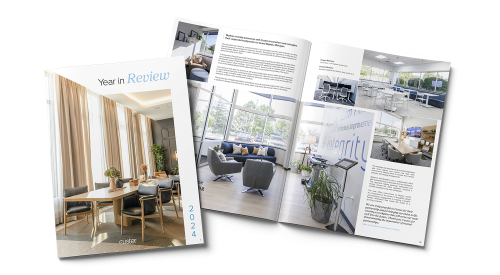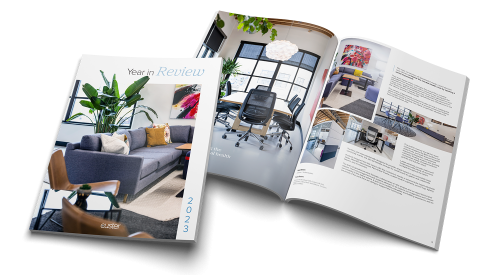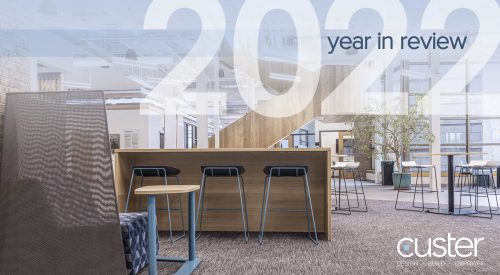- Blog
- Three Tips for Making a Smart Investment In Your Workspace
Three Tips for Making a Smart Investment In Your Workspace
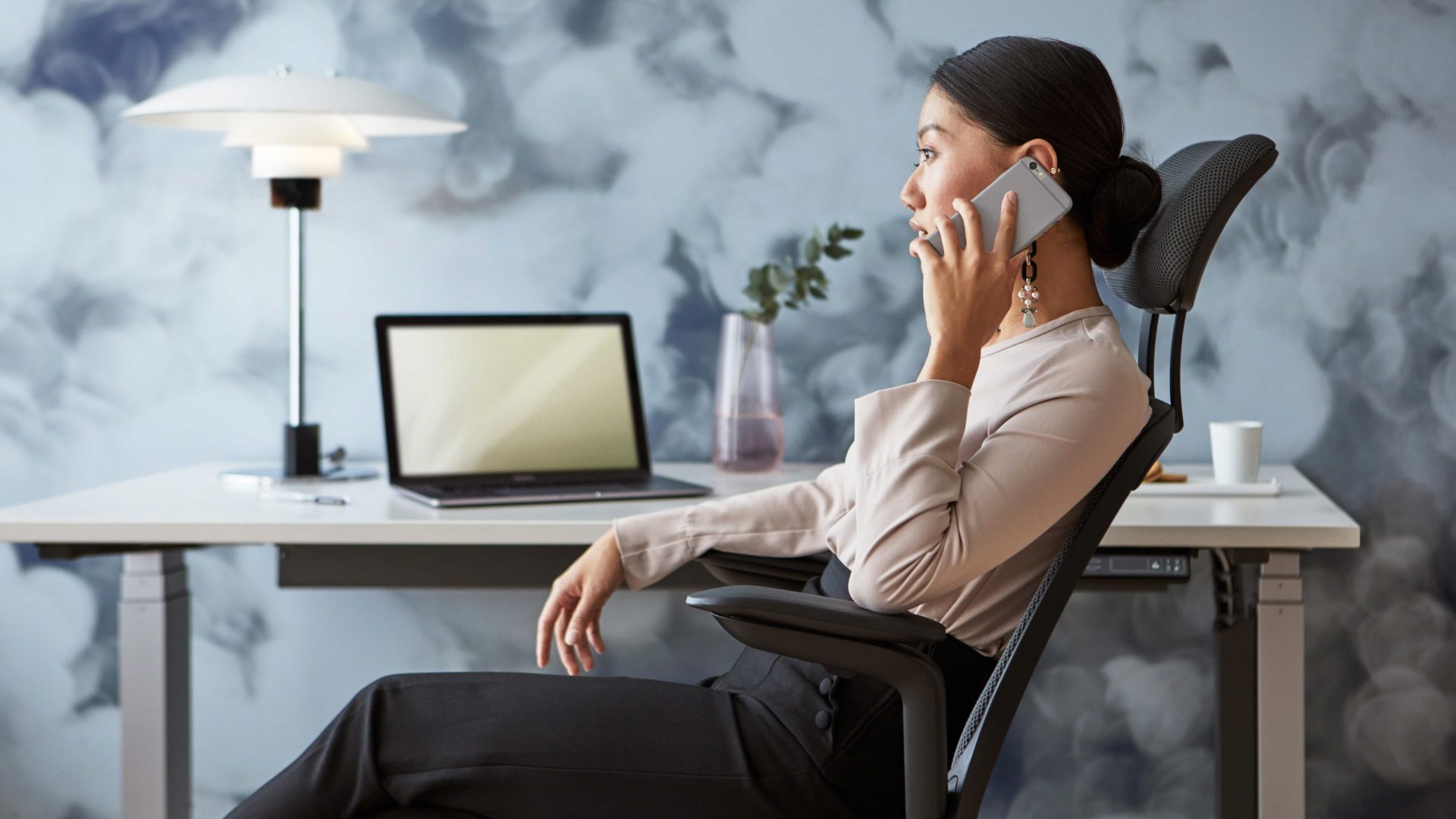
Whether moving or renovating, commercial clients make a significant investment into their organization when overhauling their work environment. As with any investment, this one requires research, preparation, and an understanding of options. These days, most people begin their research on the internet, where they don’t have to look far to find information about the top office trends or the ways the workplace is changing before our eyes. Insider photos of Google and Apple and IBM reveal a workplace design standard that owners of smaller organizations may gawk at, wondering how to simply create an environment where people can do good work and where they want to spend time. To help clients, partners, and developers better understand this investment, we’ve gathered the need-to-know information for organizations wanting to be smart when investing in the workspace. Read on!
Design for Diverse Groups of People
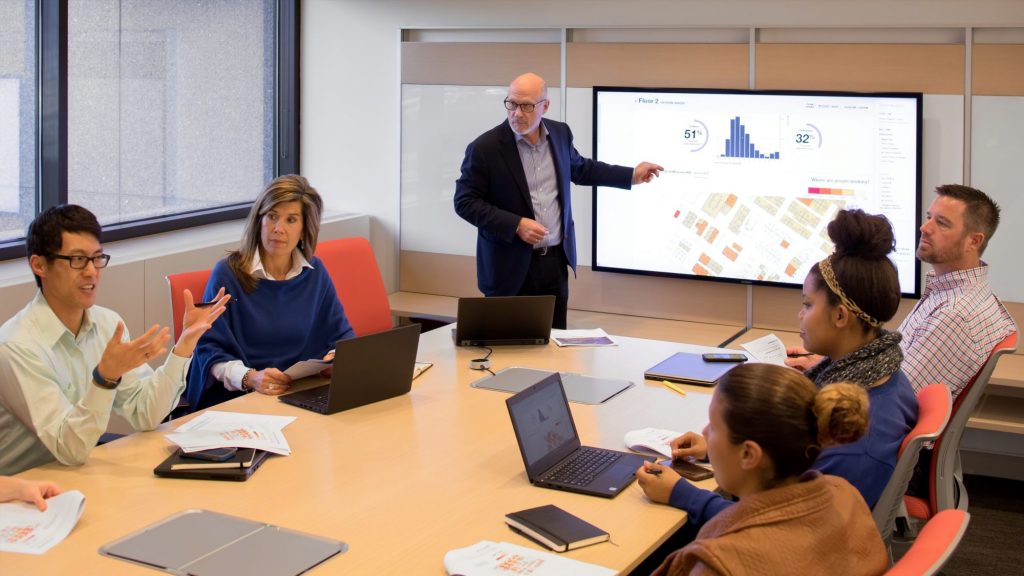 Everyone brings a unique experience, work style, and role to the workplace. Creating a palette of place and postures can ensure different people are supported in the work environment.
Everyone brings a unique experience, work style, and role to the workplace. Creating a palette of place and postures can ensure different people are supported in the work environment.
No matter where you live or work, diversity is changing the culture of the work environment. Cultural diversity, generational diversity, professional diversity, and diversity of thinking are all at play, creating both challenges and opportunities for the workforce. The design of the workplace should account for this diversity by supporting various work styles, roles, postures, and tools. For example, benching workstations may support some users who enjoy being in the open, but for others, tucking away in a private space is essential to crossing off to-do’s. Some may enjoy sitting somewhere new every day, and others may find pride in pinning family photos around their desk. While it may sound intimidating to have to account for all of these preferences, oftentimes a range of work zones can meet diverse needs and allow people to choose what works best for them.
Being mindful of the different personalities, generations, and cultures in the workplace drives design that supports individuality, but it can also bring people together. Places for employees to connect might include a casual seating area with integrated power and technology, or a café space where people can grab coffee, take a call, or unwind over lunch. These new “watering holes” can boost company culture through a sense of connectedness.
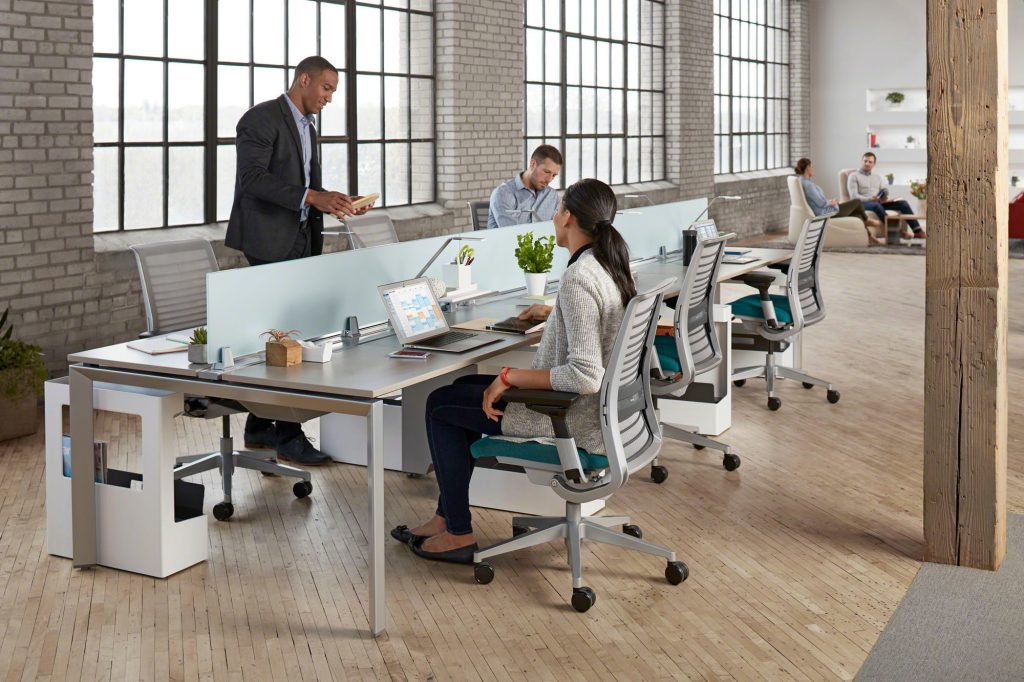 While trends come and go, great interior design solves for an organization’s objectives and needs using research-backed solutions.
While trends come and go, great interior design solves for an organization’s objectives and needs using research-backed solutions.
Don’t be trendy
Surprised to see this on our list? Custer designer Alex Genzink says that good design isn’t about trends at all.
“Great workplace design combines the client’s goals with research on how people work best,” said Genzink. “Trends may look beautiful, but if they don’t support the essential functions of your organization or help you meet your objectives, they aren’t worth implementing.”
Instead of using a blanket design trend for all clients, Genzink says, the best way to ensure a successful long-term design solution is identifying the organization’s objectives, goals and vision, and using research-backed solutions to create a space that reflects those principles. Steelcase Director of Global Research Communications Christine Congdon agrees.
“At the end of the day, people want to go to places where they can get work done,” said Congdon in the recent State of Work: Blur the Edges podcast. “Sometimes the residential esthetic looks really nice, but you try to sit in a squishy couch for too long and you realize that you can’t really be comfortable. What’s comfortable for watching TV and hanging out may not be as comfortable when you’re trying to work on your laptop and get something done. Performance is key.”
Incorporate wellness
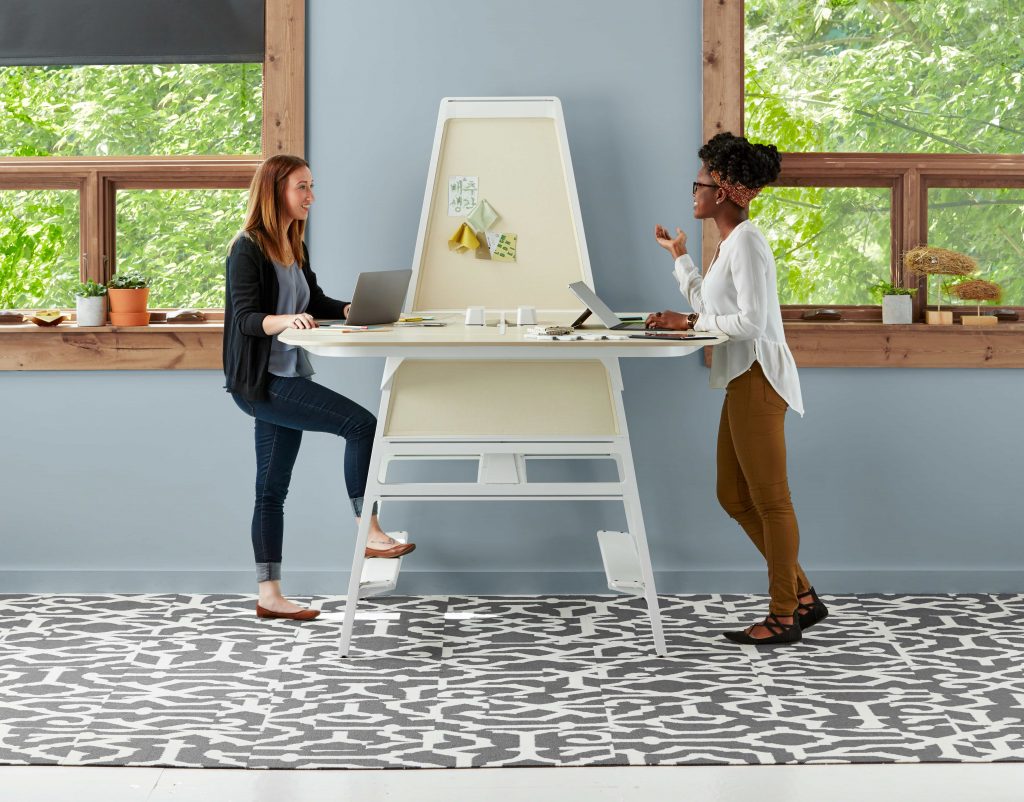 Providing standing-height surfaces encourages standing and movement throughout the day.
Providing standing-height surfaces encourages standing and movement throughout the day.
Wellness may be a buzzword in the workplace right now, but that doesn’t mean we’re contradicting our previous point. More than a trend, wellness in the workplace is an important consideration for organizations wanting to attract, retain, and engage people. As is wisely stated by the NCBI, “it is likely that future generations will look back at our sedentary working practices with the same incredulity that we now regard the idea of a smoke-filled office or aeroplane. With physical inactivity, stress, and burnout very real problems…it is time to prioritise and research activities that enhance, rather than deplete, our health and wellbeing at work.”
To this end, height-adjustable desks provide employees the option to change postures throughout the day. These desks can encourage both standing and more movement altogether. For example, if an employee is already standing, she may be more likely to walk to her coworker’s desk rather than call, or will choose to fill up a depleted water bottle because she’s already on her feet.
Further, using the principles of biophilic design changes the workplace from an environment that is cold and stark to one where life thrives. According to Steelcase research, “sizable worker absences can be attributed to office design that provides no contact with nature.” Adding plant life is a natural step, but so is using fabrics and finishes with organic patterns and multi-sensory experiences to mimic the great outdoors.
Wondering where to begin with your workplace overhaul? Click here to schedule a complimentary design consultation or a showroom tour of Custer.
